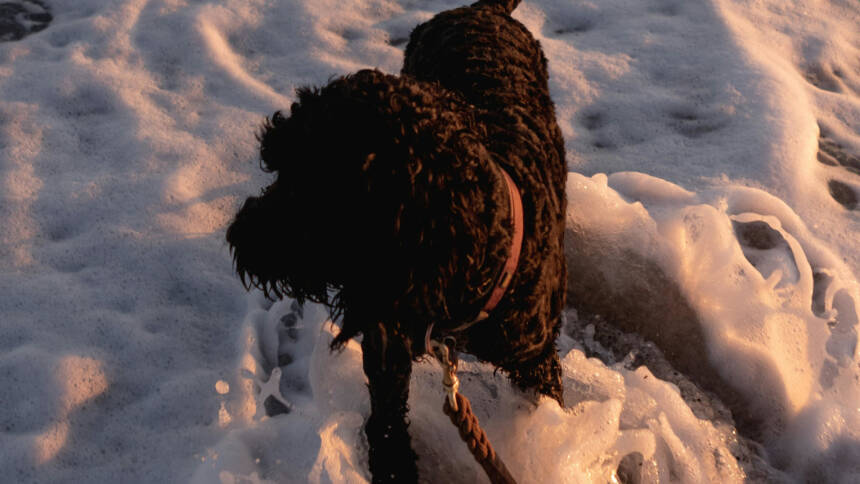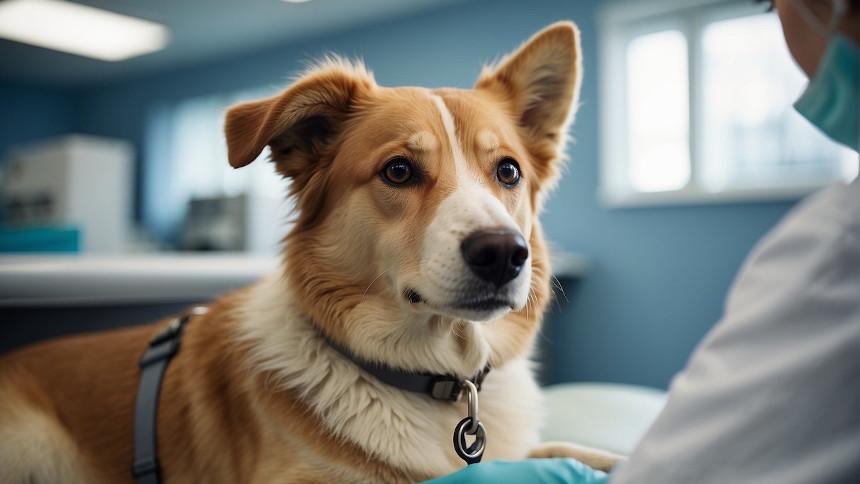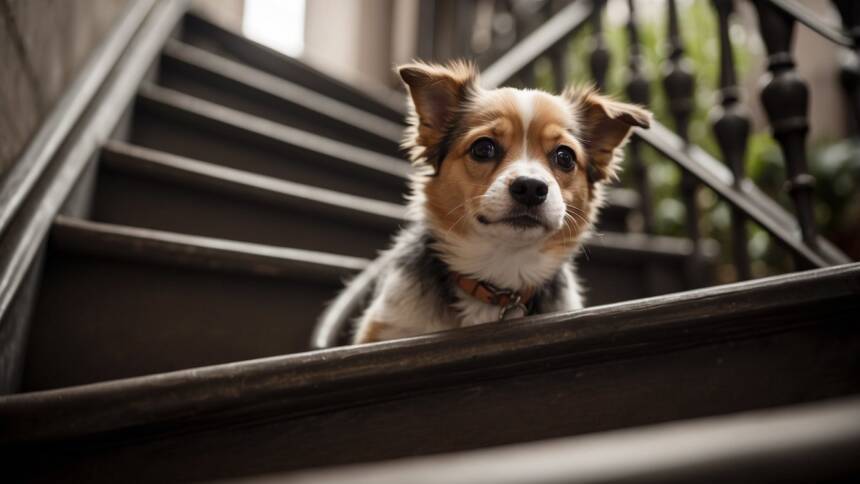Monitoring a dog’s respiratory rate is an important aspect of assessing their overall health. The typical respiratory rate for dogs, while at rest, ranges from 15 to 30 breaths per minute. Various factors such as breed, size, and the dog’s activity level can influence this rate. Owners can gauge their dog’s health by noting the respiratory rate and assessing whether it falls within the expected range.
Recognizing abnormal respiratory patterns is crucial in identifying potential health issues early. A respiratory rate consistently outside the standard range, particularly at rest, may indicate underlying conditions that require medical attention. It is essential for pet owners to understand how to correctly measure their dog’s breathing and to know when to consult a veterinarian for further evaluation.
Understanding Canine Respiratory Rate
Observing a dog’s respiratory rate is a crucial aspect of monitoring its health, as it serves as a vital sign that reflects the functioning of the respiratory system.https://www.youtube.com/embed/ev8QN29QIxs
What Is a Normal Respiratory Rate
A normal respiratory rate in dogs typically ranges from 10 to 30 breaths per minute while at rest. The rate can be reliably measured when the dog is sleeping or is in a calm state. However, the specific normal range can fluctuate slightly based on the individual dog.
Table: Normal Respiratory Rates for Dogs
| Dog Size | Average Normal Respiratory Rate (Breaths per Minute) |
|---|---|
| Large | Approximately 15 |
| Small | Approximately 25 |
Factors Affecting Respiratory Rate
Several factors can affect a dog’s respiratory rate, including:
- Size and Breed: There is a tendency for larger breeds to have a slower respiratory rate, while small breeds may breathe more rapidly.
- Age: Puppies can have higher respiratory rates compared to adult dogs.
- Activity: Right after exercise or during excited states, dogs may pant, leading to a temporary increase in respiratory rate.
- Temperature: Dogs regulate their body temperature through panting, which increases the respiratory rate when it’s hot.
It’s important for dog owners to know their pet’s usual resting respiratory rate, so they can identify any changes that might indicate a health concern.
Monitoring the Respiratory Rate
Monitoring a dog’s respiratory rate is a critical aspect of assessing their health, especially for those with heart conditions. This section provides a structured approach to measure and record this vital sign accurately.
How to Measure Respiratory Rate
To measure the respiratory rate, an observer should count how many breaths the dog takes within a set period. A single breath comprises an inhalation and an exhalation. For a realistic count, one should observe the dog when it is calm and resting, as physical activity can increase the breathing rate.
- Step-by-Step Guide:
- Ensure the dog is at rest and is not panting.
- Focus on the dog’s chest movements or use a hand to feel the breaths.
- Using a timer or smartphone, count the breaths for 15 seconds.
- Multiply the count by 4 to get the breaths per minute.
Recording Resting Respiratory Rate
After measurement, recording this vital sign is crucial for tracking changes over time. One may use a journal, smartphone app, or digital spreadsheet for this purpose. It’s vital to record the rate at the same time each day to maintain consistency, as rates may vary throughout the day.
- Recording Tips:
- Note the date and time of each recording.
- Record the number of breaths per minute.
- Mention any observations regarding the dog’s condition or behavior.
Tools and Techniques for Measurement
Various tools can facilitate accurate respiratory rate measurement. A traditional watch with a second hand or a digital timer can serve as a reliable timing device. Smartphone apps designed specifically for monitoring vital signs can also assist in both timing and recording. The use of such apps can streamline the process and reduce potential for counting errors.
- Tools:
- Stopwatch or timer
- Smartphone app
- Techniques:
- Count silently to maintain focus.
- Use the same tool consistently for accuracy.
Common Respiratory Disorders in Dogs
Respiratory disorders in dogs are multifaceted and can vary greatly depending on the breed, age, and overall health of the dog. Recognizing the signs of respiratory distress, understanding the implications of congestive heart failure on respiratory rate, and being aware of how infections impact breathing are essential for ensuring canine health and prompt veterinary care.
Signs of Respiratory Distress
Dogs with respiratory distress exhibit observable and measurable symptoms. Difficulty breathing—characterized by excessive panting, flaring nostrils, and extended neck—can indicate immediate veterinary attention is needed. Additionally, a cough may also signify underlying conditions ranging from kennel cough to heart disease.
Congestive Heart Failure and Respiratory Rate
In dogs with congestive heart failure, an increased breathing rate can be a sign of disease progression. Typically, a healthy dog has a resting respiratory rate of 15-30 breaths per minute. Variations in this rate, particularly persistent rates over 30 breaths per minute while at rest, should prompt concern and consultation with a vet. This rate may increase due to the heart’s reduced ability to circulate blood effectively, leading to fluid buildup in the lungs.
Infections and Breathing Rate
Infections, such as canine influenza or bacterial pneumonia, can lead to an increased breathing rate and effort. Dogs fighting off these infections will often have a persistent cough and may exhibit labored breathing. Quick and accurate diagnosis, often guided by knowledge of recent outbreaks or exposures, is crucial for effective treatment and controlling the spread of infectious respiratory illnesses.
Veterinary Diagnosis and Treatment
When a dog exhibits abnormalities in breathing patterns, it is vital for pet owners to consult a veterinarian to ensure an accurate diagnosis and implement an appropriate treatment regimen.
When to Consult a Veterinarian
Pet owners should seek veterinary attention if they notice changes in their dog’s respiratory rate or other clinical signs such as difficulty breathing, persistent cough, or atypical breathing sounds. These can indicate underlying health issues ranging from allergic reactions to more serious conditions such as heart failure.
Clinical Examination and Tests
During the veterinary examination, a detailed history will be obtained, and a physical assessment will be performed, which includes checking the dog’s heart rate and oxygen saturation. Diagnostics may consist of blood tests, X-rays, or ultrasounds to determine the cause of respiratory distress.
Common Tests Include:
- Stethoscope Examination: To assess lung and heart function.
- Blood Work: To identify infection or other systemic abnormalities.
- Imaging: Chest X-rays or ultrasounds to visualize the heart, lungs, and pleural space.
Treatment Plans and Medication
Once a diagnosis is established, the veterinarian will propose a treatment plan that may include medication to alleviate symptoms and treat the underlying cause. For respiratory conditions, common medications include corticosteroids like prednisone to reduce inflammation and bronchodilators for lower airway obstruction.
Typical Medications:
- Corticosteroids: To decrease inflammation in the airways.
- Bronchodilators: To open narrowed airways.
Dogs with severe conditions may require hospitalization for more intensive treatments such as oxygen therapy or surgery. The goal of any treatment plan is to stabilize the dog’s condition and improve its quality of life.
Home Care for Respiratory Health
Maintaining an optimal respiratory rate is a key aspect of a dog’s health. It requires conscientious monitoring and a balanced routine at home to ensure they remain within healthy parameters.
Managing Respiratory Rate at Home
At home, a dog’s resting respiratory rate should generally be between 15-30 breaths per minute. Owners can monitor this by counting the number of breaths in 30 seconds and multiplying by two. Noticing irregularities or consistent rates above 40 breaths per minute is a prompt for veterinary consultation. Recording daily measurements can help in tracking a dog’s respiratory health over time.
Exercise and Activity Impact
Exercise should be tailored to a dog’s age, breed, and overall health. During physical activities like running or playing, it is natural for respiratory rates to increase, but they should return to normal levels during rest. Owners should ensure a dog does not overexert, which can be seen if panting is excessive and does not subside with rest.
Monitoring During Recovery
Post-surgery or during illness recovery, monitoring a dog’s respiratory rate at home is crucial. Increased rates can be a sign of pain or complications. Owners should maintain a quiet environment and adhere to veterinary guidelines for activity levels to support a smooth recovery for their pet’s health.
Emergency Response to Abnormal Breathing
When a dog exhibits abnormal breathing, it can be a sign of a serious health issue requiring immediate attention. Prompt recognition and action can be pivotal in ensuring the well-being of the animal.
Recognizing an Emergency
A dog may be experiencing a respiratory emergency if they show signs of difficulty breathing such as gasping, choking, or breathing with an open mouth. Other indicators include excessive coughing, pale or blue-tinged gums, and extreme restlessness. It’s crucial to assess whether the abnormal breathing follows a traumatic injury, which would necessitate urgent veterinary care.
Immediate Actions and First Aid
In the face of a respiratory emergency, ensure the dog’s airway is clear of any obstructions. Calmly approach the pet and perform a quick assessment:
- Check the throat: Look for foreign objects and remove if possible.
- Positioning: Keep the dog in an upright, head-extended position to open the airway.
- Seek veterinary help: Do not delay in contacting a veterinarian or an animal emergency hospital.
Post-Emergency Monitoring
After an emergency involving abnormal breathing, monitor the dog’s respiratory rate and effort continuously. A normal respiratory rate should range between 15-30 breaths per minute when the dog is at rest. Note any recurrence of difficulty breathing or restlessness, and inform the veterinarian immediately. Continuous post-emergency monitoring is essential, even if the dog seems to have recovered.
Influences of Breed and Age
Understanding the influence of breed and age on canine respiratory rate is essential for proper health assessment. The breathing rate can vary widely between different breeds and changes with age, alerting owners and veterinarians to possible health issues.
Breed-Specific Respiratory Patterns
Certain breeds exhibit characteristic respiratory rates due to the size and shape of their chest and abdomen. For instance:
- Large breeds like German Shepherds and Labradors typically have a slower respiratory rate, averaging about 15 breaths per minute.
- Small breeds, such as Chihuahuas and Pomeranians, often breathe faster with rates around 25 breaths per minute.
Additionally, some breeds with brachycephalic skulls, like Pugs and Bulldogs, may have higher rates due to their constricted nasal passages and peculiarities within their lung structure.
Age-Related Respiratory Concerns
As dogs age, lung efficiency can decrease, and the elasticity of the chest wall may diminish, potentially altering the normal respiratory rate. Puppies, in comparison, often have a higher rate of breathing:
- Younger dogs can have a respiratory rate higher than the normal range for adults due to higher metabolic requirements and excitement levels.
- Older dogs may show signs of slowed breathing if they are experiencing age-related health conditions affecting the lungs or airways.
Monitoring changes in an aging dog’s respiratory rate can be an important indicator of their overall health and well-being.
Prevention and Wellness
Regular monitoring of a dog’s respiratory rate is critical for their health and wellness. It’s a vital sign that can indicate the state of a dog’s respiratory and overall health. Maintaining an appropriate body temperature through ventilation and ensuring preventive health measures can help keep a dog’s respiratory rate within a normal range.
Regular Check-Ups and Assessments
Routine veterinary check-ups are paramount in assessing a dog’s vital signs, including respiratory rate and body temperature. During these check-ups, a veterinarian can spot early signs of respiratory issues and advise on appropriate action.
- Health Assessments Include:
- A thorough physical examination
- Evaluation of the respiratory rate when the dog is at rest
- Temperature checks to ensure the dog is not overheated
Following a check-up, owners should familiarize themselves with their dog’s normal respiratory rate and be able to recognize any deviations, using tips provided by their veterinarian.
Preventive Measures and Lifestyle
Proactive steps in a dog’s lifestyle can significantly contribute to preventing respiratory issues.
- Tips for Prevention:
- Provide a well-ventilated living space to help regulate body temperature
- Ensure regular exercise, tailored to the dog’s breed and size
- Avoid exposure to environmental stressors, such as extreme heat
- Keep up with vaccinations and parasite prevention to lower the risk of respiratory infections
Implementing these measures can promote a dog’s respiratory health, support proper breathing, and potentially reduce the likelihood of disease.








